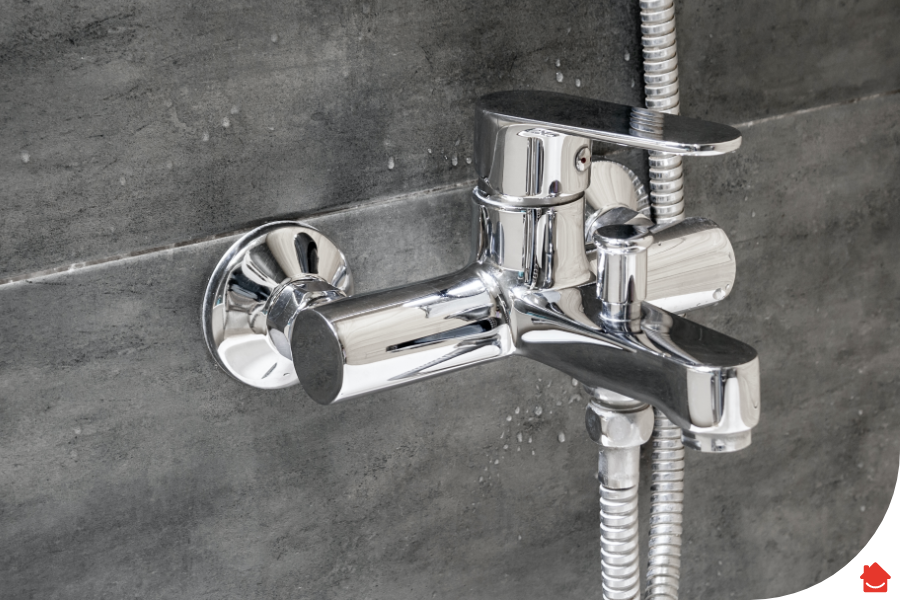Did you know there’s a simple way of protecting and preserving your radiators, so that your central heating system keeps heating your home as it’s supposed to, and helps your boiler, pipes, radiators last much longer?
Many homeowners and landlords don’t even know about this, so we’ve put together a simple guide to help put that right. We’ll spill the beans (not the radiator fluid) on what central heating inhibitor is, how it’s going to save you multiple home-based headaches and step-by-step details on how to use it.
What is central heating inhibitor?
Rather than something that stops your central heating, as the name suggests, a central heating inhibitor helps your system keep going, and going, and going.
In fact, it’s like the movie producer that runs the whole show behind the scenes. It’s equally as important as the actors and director (your radiators and boiler), and allows your central heating system to keep coming back with another sequel every year.
In fact, to check how integral a role it plays in keeping your central heating system running smoothly, why not check your boiler manufacturer’s manual? You’ll probably find a section that says your warranty may be invalid if you don’t maintain the correct inhibitor levels. Nuff said.
What is inhibitor made up of?
Central heating inhibitor is a clear or a pale yellow liquid that contains:
- potassium tetraborate tetrahydrate
- disodium molybdate
- sodium nitrate
- 2,2′,2”-nitrilotriethanol
Now go away and do a chemistry degree and we’ll explain further! Just kidding. You don’t need to know exactly what chemical reactions are going on to know that the inhibitor’s job is to be added to the system to help maintain it.
What does inhibitor do in central heating?
Over time, your hardworking central heating system and pipes naturally erode and get a build-up of rust, limescale and other unwanted materials. This creates a thick, gloopy ‘sludge’-like substance that can sit stubbornly at the foot of your radiators and pipes – stopping the warm water from flowing through each radiator and pipe properly. This stops your radiators from heating up efficiently.
This can pave the way for cold spots, faults, blockages, burst pipes, your boiler being put under too much pressure, etc. etc. All problems that can often rear their ugly heads in deep mid-winter.
The savviest homeowners and landlords use central heating inhibitor primarily to prevent the build-up of sludge in their systems. Its mix of chemicals can also break down dirt, rust and minerals and make them easy to extract.
Can inhibitor remove the sludge?
Not on its own. Inhibitor just breaks the sludge down and makes it easier to get it out of the system. To be able to remove it, you need to install a filter. The filter catches all the particles and stores them until your next boiler service, when you can get the filter emptied.
In an optimally running system you would top up your inhibitor every year, which could potentially keep your system clean and serene for 8-10 years. Reason enough to investigate, isn’t it?
The benefits of central heating inhibitor
- It does what it says on the tin, preventing debris and corrosion throughout your system, helping to prolong its life.
- In the long run, you’ll save money on expensive new boiler parts. Without using inhibitor, your system could experience more faults and blockages – or break down completely.
- Radiators warm up much quicker and the whole system is more efficient.
- It’s an especially good idea to use central heating inhibitor in a brand new system to help prolong its life from day one.
Does inhibitor get rid of years of built-up sludge?
If you’ve just bought a new property and the boiler, radiators and pipes don’t quite need replacing, but you don’t know how old they are, you’d be forgiven for assuming that you can simply use inhibitor to flush out the system.
However, introducing inhibitor after years of sludge forming, is asking a lot of it. Rather, you will need to give your radiators a power flush, and then add the inhibitor afterwards to prevent sludge from building up and creating havoc in the future (see our power flush article for detailed instructions).
(If you’ve inherited an old boiler, we definitely recommend investing in an A-rated energy-efficient non-condensing new boiler to save on your heating costs from the beginning). Our boiler cover will also give you peace of mind should any other unexpected issues arise.
How to add inhibitor to your central heating system
This is a pretty simple task that anyone can do – you’re going to add the inhibitor to one radiator in your system (you only need to choose one). If you haven’t done this before, just follow the steps below. We’ll start with a general guide for combi boilers, which most of us have here in the UK.
Tools you’ll need:
- Your chosen brand of inhibitor (see below for our recommendations)
- Adjustable spanner
- Hosepipe (will need to reach from your radiator to an outside drain)
- Jubilee clip
- Radiator key
- Flathead screwdriver
- Towels (to catch any drips or leaks)
- Funnel and flexible tube to add inhibitor into radiator (although most inhibitor bottles come with a dosing adaptor so you probably won’t need this)
Adding central heating inhibitor for a combi boiler
The following instructions are for a conventional radiator. If you have a towel radiator, turn your heating off and let it cool, then remove the plug on the top of the radiator and pour your inhibitor in.
Turn your heating off
Let your radiators cool down completely before moving onto step 2.
1. Connect your hosepipe to your chosen radiator’s drain valve
You’re going to drain your central heating system by connecting the hosepipe to the drain valve on one of your radiators (it doesn’t matter which).
2. Tighten up with the jubilee clip
3.Place a towel underneath to catch any drips
4. Open the drain valve
Drain any amount of water at least equivalent to the amount of inhibitor to be added.
5. Shut off the drain valve
The drain valve is usually found on the lowest part of the pipes attached to your radiator, or on an outside wall.
6. Unscrew the radiator bleed plug
Use your adjustable spanner.
7. Attach the inhibitor dosing adaptor
If your inhibitor comes with a dosing adaptor to attach to the radiator bleed plug, attach it now. If not, use a funnel and a flexible tube.
8. Pour in the inhibitor in
Use your dosing adaptor or funnel.
9. Remove the adaptor or funnel
10. Tighten the bleed plug back on with your adjustable spanner
Don’t tighten the valve too much – this can damage the ‘O’ ring.
11. Turn your radiator valves back on
12. Check your boiler pressure and top it up if needed
13. Now bleed your radiators
Bleeding your radiators will make things much more efficient while the inhibitor circulates around your central heating system.
What if I don’t have a combi system?
If you don’t have a combi system, but instead have a conventional boiler and heating system, you’ll need to pour your inhibitor into your heating tank, which is usually in your loft.
How to add central heating inhibitor to an open-vented system
If you have a large water tank and a small expansion tank (again, in the loft), or you have an open-vented system – you’ll need to add the inhibitor to the smaller tank.
1. Before you do this, you need to stop the flow of water into the system by turning off the valve on the tank or, if you don’t have a valve, shutting the water off at the mains.
2. Now the tank’s empty, check its condition. If it’s clean and corrosion-free, add your inhibitor.
3. If the inside of your tank is covered with limescale or rust, give it a good clean before adding inhibitor.
4. Now pour the required amount of inhibitor into the tank. You’ll need to follow the instructions on the bottle and make a calculation relative to the number of radiators you have in your home.
5. Once you’ve added your inhibitor, switch the valve or the mains water back on.
How often should central heating inhibitor be changed?
You’ll need to change your central heating inhibitor about once a year. Its active chemicals break down over time, so minerals and rust will begin to build up.
Whenever your system is drained, you should also always remember to top up the inhibitor again. The inhibitor liquid will be drained along with all the water, so it’s important that you remember to do this, otherwise your work so far will be lost.
How long does central heating inhibitor last?
Inhibitor does dilute over time, and there are many factors involved in how fast this happens, depending on the size of your system, etc. Your best bet is to regularly test the levels in your system and add more inhibitor if needed. You can buy fairly cheap test kits online to sample your radiator water with. If your radiators start taking a long time to heat up, use one of these test kits as it’s possible your inhibitor has diluted and isn’t doing its job properly any more.
Always use the same kind of inhibitor, unless you’ve drained your entire system and are starting from scratch. If you mix inhibitor brands in your radiators, you may be potentially mixing extra, unnecessary chemicals and conducting your own little science experiment in your central heating system. We strongly advise against this!
Three ways to make your inhibitor go further
What do you think of central heating inhibitor now? We’re sure you’ll agree it’s pretty crucial to a healthy and functioning central heating system. But wait! There’s more you can do to prolong the life of your system:
1. Power flush your radiators
Remember, the inhibitor can only break down the sludge in your system, giving your radiators a power flush can get it out. Do this if you have just bought the property or you want to eject that sludge in one fell swoop.
2. Install a magnetic boiler filter
Magnetic filters protect your boiler by catching all the bits of sludge that the inhibitor breaks down, before it gets to the boiler to do some damage. Magnetic filters need to be maintained once a year – this should be covered in your annual boiler service.
3. Add a limescale reducer
Magnetic filters aren’t able to remove limescale, because it isn’t magnetic! So it’s a good idea to get a limescale reducer as a build up is potentially very damaging. Adding a limescale reducer saves you money in the long term, so it’s a great investment.
Get more peace of mind for your central heating system
Even with the best of intentions, your boiler, radiators and pipes can develop faults and give you something else to pay for just when you least expect it. Check out our boiler cover for added protection from life’s unexpected surprises, and if you need help in an emergency, just get in touch and we’ll be on our way.
FAQs
How often do you need to change the inhibitor in a central heating system?
We recommend once a year – or, if you have to drain your system at any time, every time after that. You can buy tester kits to check the levels of inhibitor in your system so you can add more if needed.
How much inhibitor do I need in my central heating system?
Check the manufacturer’s instructions on the inhibitor bottle. A full bottle is usually enough to make sure there’s plenty to pump around the average system, which on average is about 10 radiators.
Can you use too much central heating inhibitor?
You won’t damage your system by overdosing on inhibitor. But it’s wise to follow the instructions on the bottle, put in the correct amount for the number of radiators you have, and use a testing kit from time to time to make sure the levels are topped up.




